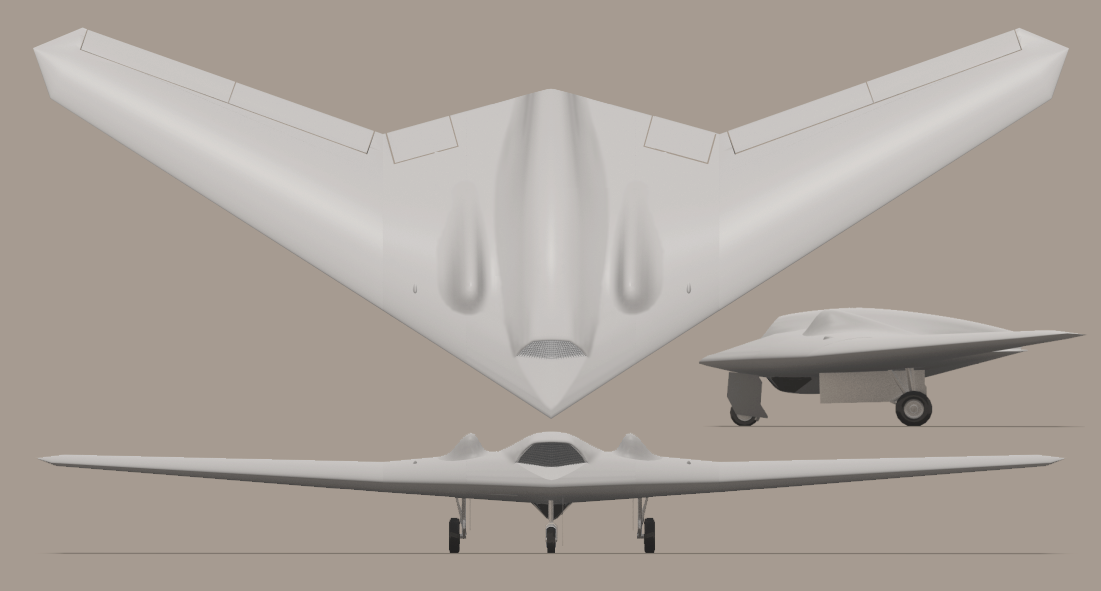
Yuri Knutov, a Russian historian, gives a brief history of the first Russian stealth drone, the S-70 Okhotnik. He gave a brief interview to the Russian news outlet Izvestia in the middle of December. He was asked for more information about the S-70 drone.
According to Mr. Knutov, the “hunter” is intended to have a low radar signature, i.e. stealth, develop supersonic speed, and fly at extremely high altitudes. Mr. Knutov’s final statement is that the S-70 Okhotnik will fly into space in the future. According to the historian, this will be possible with the development of new engines.
Mr. Yuri Knutov says things that are not “new in Russian claims” in general. Moscow has praised the drone for years, despite the fact that it has only flown once in 2019. Such claims are likely to be PR stunts rather than a thorough examination of the S-70’s capabilities. A common practise among “Russian experts” is to praise a product before it has been accepted into service rather than after it has been accepted into service.
Knutov even says that the Americans, as well as the NATO forces, do not yet have “such technology”. The results achieved by the S-70 have no analogs. According to him, the US wanted to do something similar, but then the attempts stopped “because they did not cope with the technical task they were facing.”
Among space experts, analysts, and practitioners, the definition of open space remains ambiguous. In general, the space outside the Earth is characterised by a near-perfect vacuum. Outer space has a low density and is densely packed with particles. Hydrogen and helium are among them, as are electromagnetic radiation, magnetic fields, neutrinos, dust, and cosmic rays.
Mr. Yuriy Knutov has prior military experience. He is currently the director of the Air Defense Museum. He graduated from the Leningrad Higher Military-Political School for Air Defense after being born in the Russian city of Orel in 1958. He has a distinguished military career, rising to the rank of colonel. He now holds the rank of retired colonel. Mr. Knutov has received numerous awards. He has several medals from Russia’s Ministry of Defense, as well as the Order of Merit to the Fatherland.
According to Mr. Knutov, the S-70 will be capable of performing air defence duties. According to him, the S-70 has technical characteristics that are almost unattainable by its Western competitors. He claims that the S-70 will be capable of controlling a swarm of drones. He also claims that the S-70 will serve as the Su-57’s loyal wingman. In fact, the latter claim was tested in Russia in 2019 when the S-70 flew alongside the Su-57.
The drone is still in the works. Mr. Knutov may have inside information on the capabilities of the S-70. Russia announced some time ago that the S-70 will be unveiled to the world in 2024. Two flying prototypes are currently being tested on the ground.
The drone is a collaboration between the two most successful Russian combat aircraft manufacturers, Mikoyan and Sukhoi. One of the two prototypes is expected to be deployed to Syria for testing in a real-world combat environment in 2020. It even carried out an attack on Syrian targets, but this information has received no confirmation, neither from Russia nor from Syria, and remains speculative.
According to RIA Novosti, the S-70 Okhotnik conducted a second flight test in September of this year, during which the drone fired several surface-to-air missiles. This claim has yet to be confirmed, neither by Russia nor by Western observers who have been following Russia’s actions much more closely since the beginning of the war with Ukraine, including the military flight range inside the country.
The development of the Russian stealth drone is also being followed by the Western media. Some claim that the rocket firing flight test occurred much earlier. Since the start of the conflict with Ukraine, some military experts have wondered whether Russia could or has already used one of the two flying prototypes in Ukraine. There is also no official confirmation from the Kremlin at this time. There have only been official confirmations [from the Minister of Defense] of strikes beyond visual range, but from another new Russian Air Force aircraft, the Sukhoi Su-57 Felon.
It should be noted that Western military analysts and experts providing interviews and opinions on the Russian drone are not criticising the Russian drone at this time. This could be because Russia hasn’t finished developing the drone and isn’t disclosing all of its capabilities.
The Russian S-70 Okhotnik moe takes off with a maximum payload of 25,000 kg, according to information available from open sources [which cannot yet be officially confirmed]. The maximum operational range will be 6,000 km, and the maximum speed is expected to be in the 1,000 km/h range.
It is powered by a Saturn AL-41F derivative engine that does not have an afterburner or thrust vectoring and may be replaced in the future. Surprisingly, this engine was designed specifically for the Mikoyan Project 1.44, a little-known Russian combat aircraft. Flatpack is another name for this plane. The Mikoyan design bureau created Project 1.44, a multirole fighter technology demonstrator.





